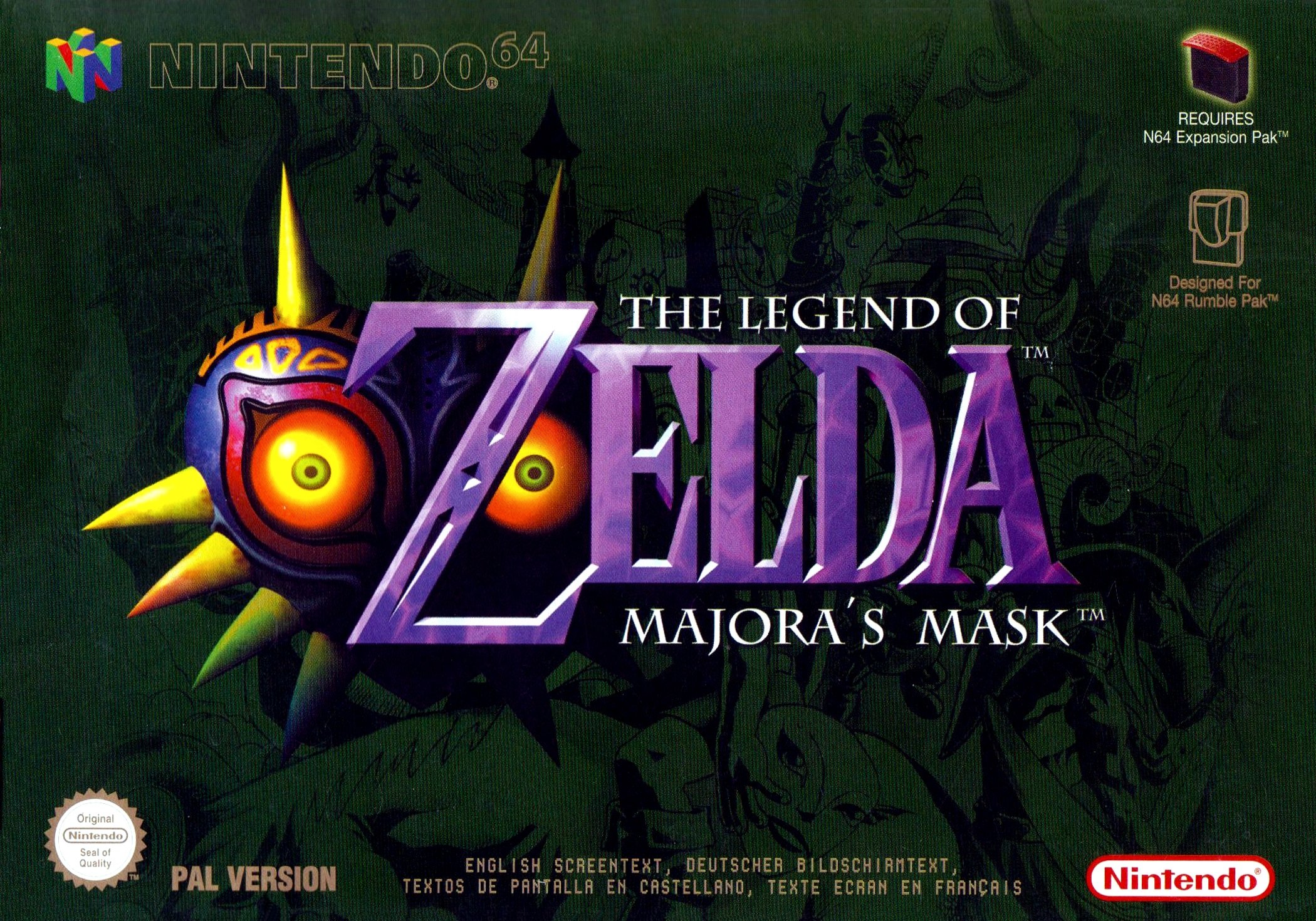
THE LEGEND OF ZELDA: MAJORA’S MASK
The Legend of Zelda: Majora's Mask, released in 2000 for the Nintendo 64, stands as a profound and unique entry in the storied Zelda franchise. Developed by Nintendo's EAD division, this game is renowned for its departure from traditional Zelda formulas, offering a more intimate and emotionally charged experience.
Directed by Eiji Aonuma and produced by Shigeru Miyamoto, the creation of Majora's Mask was marked by a desire to craft a distinctive Zelda experience within a limited development timeframe. Leveraging the engine and assets from its predecessor, "Ocarina of Time," the team introduced innovative gameplay mechanics and a darker, more narrative-driven focus. The inspiration for its unique three-day cycle system and the game's thematic elements came from various sources, including Miyamoto's childhood experiences and traditional Japanese festivities.
Majora's Mask is recognized for its challenging gameplay, which stems from its unique time-resetting mechanic. Players have three in-game days to prevent the moon from crashing into the game's world, Termina. This system created a sense of urgency and required players to manage their time effectively while exploring the world and solving puzzles. The game's difficulty is also derived from its complex storylines and emotionally resonant quests, which challenge players to think deeply about the characters and their fates.
Graphically, Majora's Mask pushed the limits of the Nintendo 64, utilizing the Expansion Pak to enhance the game's visuals. The game featured more detailed textures and complex animations than its predecessor, creating a world that was both eerie and beautiful. The use of dynamic lighting and weather effects added to the game's immersive atmosphere, encapsulating players in the world of Termina.
The game's music and sound design, composed by Koji Kondo, played a crucial role in building its haunting and melancholic atmosphere. The soundtrack, with its memorable and emotive melodies, perfectly captured the game's themes of urgency, sorrow, and hope. Sound effects, from the ominous ticking of the clock to the distinctive noises of different characters and environments, further enriched the immersive experience.
In terms of design, Majora's Mask was innovative in its narrative structure and use of masks, which granted Link new abilities and forms. This mechanic allowed for varied gameplay and puzzle-solving, as players had to strategically use different masks to progress through the game.
Culturally, Majora's Mask had a significant impact. It challenged traditional notions of what a Zelda game could be, offering a more introspective and mature narrative. The game's exploration of themes like grief, loss, and the passage of time resonated with players, making it a cult classic and a subject of extensive critical analysis.
Did you know? Majora's Mask was developed in a remarkably short period of about a year, a decision made by Miyamoto to maintain the team's creative momentum following the success of "Ocarina of Time."
The Legend of Zelda: Majora's Mask remains a towering achievement in video gaming, a testament to the medium's capacity to convey deep, complex narratives and emotions. Its innovative gameplay, atmospheric visuals, and profound storytelling exemplify the artistic depth and creativity inherent in video games.

